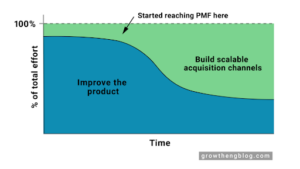Modern business runs on data. Your company likely collects information on clients, products, competitors, vendors, and many other industry-specific metrics. The challenge is what you do with all of this information once you have it, with many companies turning to business intelligence (BI) software to help them analyze and organize their data. But before you can use BI software effectively, you must have all of your information in one place, cleaned, and organized. That is where data integration comes in.

What is data integration?
To integrate literally means to combine two or more unique things into one whole. Different software applications and platforms store data in their own specially designed databases that utilize various structures. This means that the information created and stored by your different tools is isolated into different silos and is often formatted so differently, it’s exceedingly difficult to combine. In order for your data from diverse applications to be used together in your business decisions, it must go through a data integration process.
What is data transformation?
Not all data is the same. One essential step to integrating data from multiple sources is data transformation. Because different applications use different data structures, combining information without transformation can result in duplicate data and formatting inconsistencies. It’s also common to run into challenges combining data sources because it was never organized for that purpose. For example, you may want to combine data on customers from your CRM, an ad platform, and a payments platform. But, that analysis won’t be effective at the individual level, or by segmentation group, if you cannot reliably make sure that the data from the same customers in each of those tools is combined correctly.
Transforming data processes the information and organizes it as you need for analysis. It also involves the process of cleaning data, unifying formats, etc.
Types of data integration
There are different data integration techniques and data integration tools, but the core goal of all of them is to take your siloed data and combine it into one usable format and location. Manual integration is the process of having a human data scientist or analyst go through each line of data in order to transform and format the information for integration. This data integration approach is time-consuming, difficult, and virtually impossible in some complex data integration use cases. However, these issues can be resolved through automated data integration software. Data integration software is specifically designed to use quality data integration standards to automate the process, improving both accuracy and efficiency. One common resource for integrating data from multiple sources is called ETL. ETL stands for “extract, transform, load. These specialized software tools take information from a variety of locations, transform them into a common format, and then load the modified data into a designated location.
What is a data warehouse?
This designated location for all your combined data is known as a data warehouse. A data warehouse is a specialized data storage solution that is designed for large amounts of data from diverse sources. Storing all of your integrated and modified data in one location allows you to analyze and organize it as one set of information. Having this integrated data available is when business intelligence becomes the most valuable.
What is business intelligence?
Data collection and integration result in huge amounts of information. Depending on your industry, you may collect tens of thousands of data points each day about how clients are interacting with your products, what marketing campaigns are garnering the most attention, which business strategies have produced the best profit margin, and more. Using this information to make decisions requires analyzing and understanding the data points you’ve collected. Business intelligence (BI) tools automate and simplify the process of compiling and viewing this data. They parse the information automatically and then generate charts, graphics, and dashboards that allow your team members, even those with minimal technical background, to use the information in their day-to-day jobs.
When you can perform this impactful analysis with multiple data sources, you have access to insights that simply cannot be discovered with lesser data tools, like the built in reporting tools in the platforms where you generate data.
The power of data integration and business intelligence
One example of the importance of business intelligence integration is in the case of Rippling. Rippling is a B2B SaaS company that provides human resources, information technology, and finance solutions to their clients. Before upgrading their data infrastructure, accessing and communicating data required the engineering department to manually extract data and send it to the Head of Sales Ops and Strategy, who then organized it in Excel spreadsheets and then pasted it into PowerPoint slides. The process proved time-consuming and challenging.
Rippling then implemented a BI tool that allowed easier access for other team members, but the information integration process was still manual. It was only when they implemented a scalable, reliable data infrastructure that they were able to use the benefits of data integration and business intelligence fully. Without this collection of data tools, BI tools are far less effective. Using data integration in business intelligence makes all tools more valuable. Automatically integrating data from multiple sources into one comprehensive data warehouse creates the information pool that BI tools can then use to give you the invaluable insights that power your business decisions. Contact us to find out about how [Mozart Data can help you get your data ready for business intelligence.


